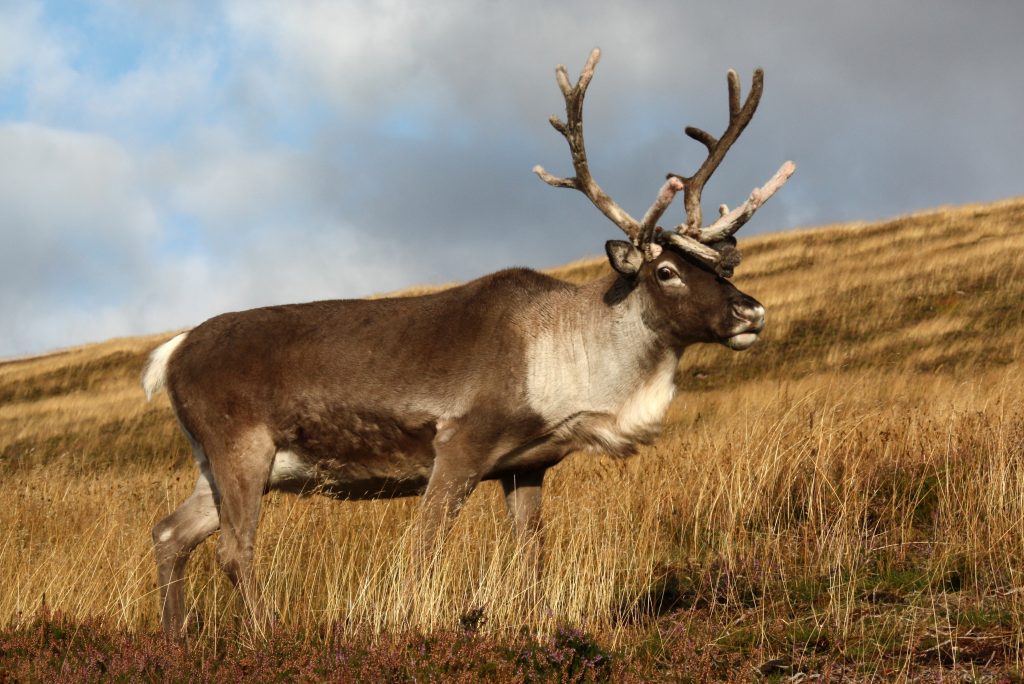Visitors often ask how on earth we tell apart the 150-strong herd of reindeer. Whilst there is variation in colour, markings and antler shape, one of the biggest distinguishing features is actually character. Just like people, reindeer come in every shade of cheeky, shy, friendly, stand-offish, bolshy, greedy, intelligent, daft… I thought I might mention a few stand out character types, past and present!
Overexcited Labrador

Step up, Aztec! Always the first to be involved, always wanting to “help”, very friendly, lovable, and not a manner to be seen if there is a mere sniff of food… Fun, but a bit of a liability.
Also falling into this category: Kipling, Bumble, Eco
The Thinker

Reserved and steady, not always the easiest to catch but utterly dependable when out on tour. Olmec, I’m looking at you.
Also applies to: Dragonfly
TV Diva

Introducing the one and only Holy Moley… who knows full well that she basically had her own TV documentary and hence feels that every visitor is there to see her and her alone.
Also: Dr Seuss appears to feel that his minor starring role in the same show entitles him to extra food portions every single day too.
Sweet as Pie, Wouldn’t Hurt a Fly

Beautiful light-coloured Diamond has to be one of the gentlest souls in the herd. She walks with a slight limp after an injury back in her younger days, which of course means we all (needlessly) slip her extra bits of feed.
Also: Amber, Esme, Sunflower
Loyal and True

Certain reindeer can always be relied upon when we’re moving the free-range herd – they’ll be near the front, they willingly have a headcollar put on, they trustingly plod behind you whilst the rest of the herd debate whether your bribe is worth coming for. Okapi, you’re the star here.
Also: Olympic
The Boy Band Pin-Up

Sherlock has to be one of the most impressive looking reindeer in the herd today, and he also knows how to work it. Some reindeer naturally prick their ears for a photo, and seem to offer their best side!
Also: Elvis, of whom there was never a bad photo taken!
Grumpy Old Men (and Women)

Bond may only be 5 years old, but he definitely ticks every box for “grouchy” – you only need to look at him and he rolls his eyes at the thought that you might try to interact with him. Likewise, walking too near Lace or Turtle is likely to extract a swing of the antlers and a snap of the mouth as a warning. Turtle is Pony’s daughter, who was perhaps the grumpiest reindeer we’ve ever had in the herd, so it’s definitely inherited!
Also: Addja once implanted his antlers into my leg when in a bad mood, only to cast one, which definitely didn’t make him any more cheery (though it did make me chuckle at the instant karma).
Big Friendly Giant

One of the tallest, heftiest reindeer in the herd, Scrabble was a bit of a liability in his youth as he was just so keen to meet everyone, and somewhat unaware of his sheer size. It almost seemed that his bum was so far away from his brain that he couldn’t keep track of the children he was wiping out as he turned around… Now he’s an old fella so a bit steadier, but just as friendly and enormous!
Also: Comet
Don’t Mess With…

Brie may look little and cute, but her first instinct if she doesn’t like something is to beat it/them with her antlers, and whilst she both she and her antlers may be small, she is ANGRY. As Mel once found out when leading Brie, and Brie decided she did NOT want to be there…
Also: Spy. If Spy has calved, it usually takes about four herders, all hiding behind gates/fences to move her where we want her to be.
Andi









